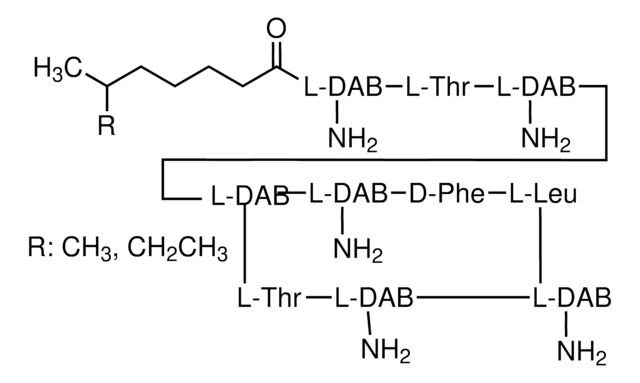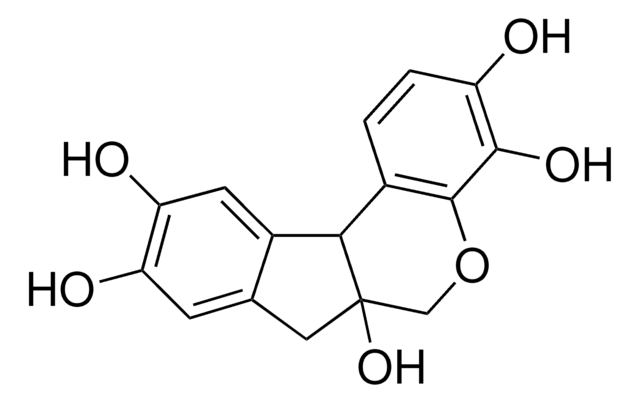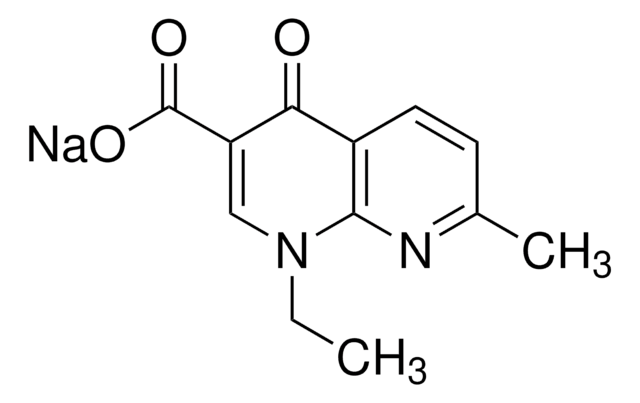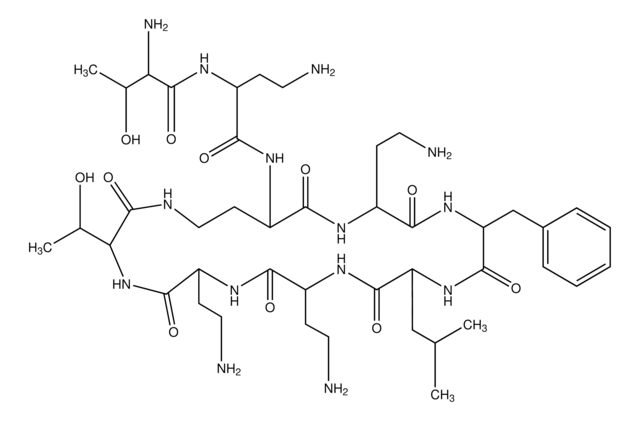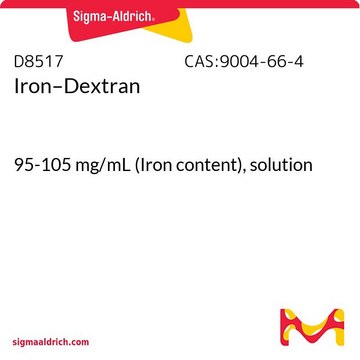5291
Polymyxin B Sulfate
Polymyxin B Sulfate, CAS 1405-20-5, is an antibiotic that is effective against Gram-positive bacteria. Inhibits phospholipid-sensitive Ca2+-dependent protein kinases.
Synonym(s):
Polymyxin B Sulfate, Aerosporin
About This Item
Recommended Products
Quality Level
form
solid
manufacturer/tradename
Calbiochem®
storage condition
OK to freeze
color
white to off-white
solubility
water: 25 mg/mL
shipped in
ambient
storage temp.
10-30°C
InChI
1S/C48H82N16O13.H2O4S/c1-27(2)24-37-47(76)59-32(11-19-52)41(70)56-31(10-18-51)43(72)61-35(14-22-65)39(68)54-21-13-34(45(74)57-33(12-20-53)44(73)64-38(48(77)63-37)25-28-6-4-3-5-7-28)60-42(71)30(9-17-50)58-46(75)36(15-23-66)62-40(69)29(8-16-49)55-26-67;1-5(2,3)4/h3-7,26-27,29-38,65-66H,8-25,49-53H2,1-2H3,(H,54,68)(H,55,67)(H,56,70)(H,57,74)(H,58,75)(H,59,76)(H,60,71)(H,61,72)(H,62,69)(H,63,77)(H,64,73);(H2,1,2,3,4)
InChI key
HNDFYNOVSOOGDU-UHFFFAOYSA-N
General description
Application
- to neutralize the endotoxins in bovine serum albumin
- in the in vitro treatment of hepatic stellate cells (HSCs)
- as an antibiotic in collateral sensitivity and cross-resistance analysis in Escherichia coli
Biochem/physiol Actions
Warning
Other Notes
Ngezahayo, A. and Kolb, H.A. 1993. Pflugers Arch.422, 413.
Kubo, M. and Okada, Y. 1992. J. Physiol.456, 351.
Strasser, S.H., et al. 1992. Circ. Res.70, 1304.
Hegemann, L., et al. 1991. Eur. J. Pharmacol.207, 17.
Inaba, H. and Filkins, J.P. 1991. Am. J. Physiol.261, R26.
Marra, M.N., et al. 1990. J. Immunol.144, 662.
Legal Information
signalword
Warning
hcodes
Hazard Classifications
Acute Tox. 4 Oral
Storage Class
11 - Combustible Solids
wgk_germany
WGK 3
flash_point_f
Not applicable
flash_point_c
Not applicable
Certificates of Analysis (COA)
Search for Certificates of Analysis (COA) by entering the products Lot/Batch Number. Lot and Batch Numbers can be found on a product’s label following the words ‘Lot’ or ‘Batch’.
Already Own This Product?
Find documentation for the products that you have recently purchased in the Document Library.
Customers Also Viewed
Our team of scientists has experience in all areas of research including Life Science, Material Science, Chemical Synthesis, Chromatography, Analytical and many others.
Contact Technical Service